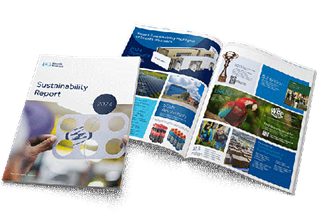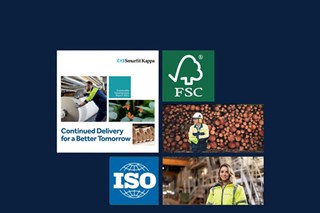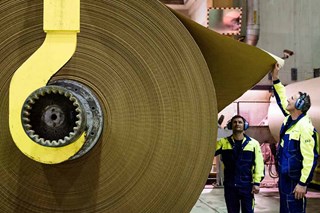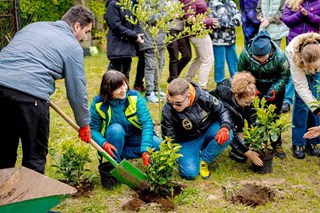Reforestation: What is it and How Paper Packaging Supports Sustainable Forestry

Smurfit Westrock participates in sustainable forest management through its own 100% FSC- and/or PEFC-certified forests, and by only sourcing fiber from sustainably managed forests. By definition, reforestation is the process of planting trees in areas that have suffered loss or degradation of their forest cover, with the aim of restoring forests and contributing to the recovery of natural ecosystems. Smurfit Westrock does this in various ways around the world, either directly or in partnership with local and regional organizations, and we could not responsibly manage forests without reforestation efforts.
In this blog, we’ll share a bit about sustainable forest management, why reforestation is such an important part of it, and describe the different types of reforestation.
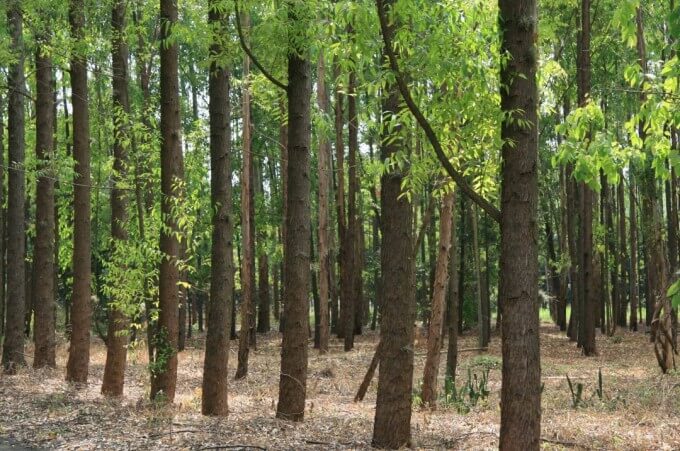
The origins of sustainable forest management and reforestation
Sustainable forestry is the idea that forestry should be done in a way that balances social, ecological and economic interests, keeping forests healthy for the future. Sustainable forestry practices were first seen in 18th-century Germany with the establishment of the first forestry school. These practices gained wider acceptance in Europe and North America toward the end of the 19th century with the U.S. establishing the first national forest reserve in 1866, followed by the start of the U.S. Forest Service in 1905.
Thanks to the forest conservation efforts of the world’s first foresters, reforestation is a common practice today. More than one billion trees are replanted in the U.S. every year, and from 2000 to 2020, the world gained 131 million hectares of tree cover through reforestation.
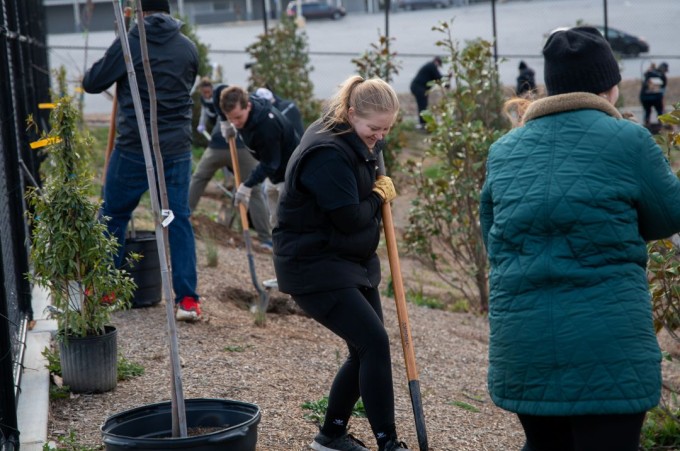
The benefits of reforestation
Reforestation can be carried out in various types of terrain: urban areas, rural areas or areas that have deteriorated due to human activities, such as logging. It is not only seen as a necessary action to counteract the negative impacts of deforestation but also offers several strategic and operational benefits for organizations.
In addition to planting new trees, it can involve restoring native vegetation using sustainable forest management practices. Reforesting in this way prevents deforestation, promotes biodiversity, improves soil and water quality and mitigates the effects of climate change through absorption of carbon dioxide from the atmosphere.
Because planting trees directly contributes to absorbing carbon dioxide from the atmosphere, organizations that participate in reforestation projects can reduce their carbon footprint, which is increasingly important in a world concerned about climate change. This can have a positive impact on consumer perception loyalty and attract new business.
In addition to its positive environmental impacts, reforestation generates significant economic and social benefits. At the operational level, reforestation can also generate long-term benefits for industries that rely on forest resources. Planting specific species can generate renewable resources such as timber, non-timber products, and ecosystem services, supporting local business operations.
When approached collaboratively with local communities, reforestation can become a source of employment and economic development, strengthening relationships between organizations and local populations. Investing in rural reforestation projects improves the quality of life of rural communities, which can have a positive impact on public perception and the organization's relationships with its different stakeholders.

Types of reforestation
Reforestation encompasses a variety of methods, adapted to the specific regional conditions and its conservation objectives. All methods have value and hold a place in the realm of sustainable forestry.Commercial reforestation. Commercial reforestation refers to the strategic and technically executed planting of trees with the primary objective of obtaining sustainable economic benefits. Unlike reforestation focused only on environmental restoration, this approach focuses on tree species with significant economic value, such as wood for solid products (structural, furniture or pallets) or for energy generation from biomass, paper pulp, or non-wood products.
Those practicing commercial reforestation have adopted responsible forestry practices and certifications, such as FSC® (Forestry Stewardship Council) certifications. Certifications, such as the one granted by the FSC®, promote the balance between financial profitability and environmental preservation, supporting the notion of obtaining profits in a responsible and sustainable way in the long term.
Natural reforestation. This type of reforestation allows nature to take its course without direct human intervention. Dispersal and natural germination of seeds from existing trees regenerate the forest without the active participation of human beings. It highlights nature's ability to recover, emphasizing the importance of preserving ecosystems capable of regenerating without outside assistance.
Assisted reforestation. It involves direct human intervention to accelerate the forest regeneration process. It includes planting seeds, transplanting seedlings, and applying sustainable forest management practices.
It facilitates faster and more controlled recovery of degraded areas, especially in situations where natural regeneration is limited.
Reforestation with native species. Focuses on planting species endemic to the specific region. A selection of native species from the local ecosystem are planted to promote biodiversity and contribute to the restoration of natural habitats. These efforts aim to restore the original composition of flora and fauna, thereby strengthening the ecosystem's resistance to environmental changes.
Multifunctional reforestation. This focuses on planting trees with environmental, economic and social value. It includes species that can be used for the production of wood, food, medicines or other resources, promoting long-term sustainability. It seeks to balance environmental conservation with economic benefits, involving local communities in the process.
Reforestation of urban areas. Planting trees in urban areas to improve air quality, provide shade, and contribute to the wellbeing of the population. It involves the selection of suitable urban species and the creation of green spaces in urban environments. It counteracts the negative effects of urbanization, improving environmental health and the quality of life in the region.
Reforestation of rural areas. Planting trees in rural settings aims to benefit both the environment and local communities. The process includes close collaboration with communities, actively involving farmers, rural residents and community groups. Special attention is paid to the variety of species, selecting those that not only contribute to the natural environment but also meet the specific needs of communities by providing economic resources, food, timber or medicinal benefits.
Rural reforestation seeks not only to restore the ecosystem but also to promote sustainable agricultural and forestry practices, including through the application of agroforestry systems. Its main objective is to improve the livelihoods of rural communities, through the sustainable provision of forest resources, job creation and the improvement of environmental quality, addressing aspects such as soil and water conservation to prevent erosion and protect watersheds.

Smurfit Westrock's commitment to long-term forest conservation
Globally, we add forest cover in various ways, either through afforestation when trees are planted in areas where there was no forest before, or reforestation, which focuses on restoring trees that were removed or lost to natural disaster. Both practices can be done for conservation, ecological restoration or productive use.
At Smurfit Westrock, we manage more than 120,000 hectares of forestland in Latin America, combining conservation, production and reforestation. Our responsible forest management is backed by more than 20 years of FSC Certification, which guarantees sustainable practices throughout the operation.
Over 40% of our Brazilian forestland and a third of our Colombian forestland are exclusively dedicated to the protection of native forests. Our Colombian forests are home to more than 1,400 species, many of them at risk of extinction. The Colombian forestry model is complemented by research in biodiversity, ecological restoration, environmental education and job creation in rural areas. Our foresters there contribute all of their forestry data to the country’s Biodiversity Information System, making us its largest data publisher. The public database supports research, education and environmental management decisions in the region.
In North America, Europe and Asia, we plant trees and educate young people about taking care of forests in partnership with local and regional organizations. We often work with regional forest conservation programs like The Nature Conservancy, contributing to their efforts to restore and maintain protected areas. For example, in the Basque region of Spain, our employees worked on reforestation with the Lurgaia organization planting trees in the Urdaibai UNESCO Biosphere Reserve.
Through Rock the Rim, our partnership with the Atlanta Hawks NBA team, a tree is planted in an urban area every time a basketball player dunks the ball. And through programs like Trees Into Cartons and Cartons Into Trees, our team members educate elementary school students about how boxes are made and then gift students with their own tree to plant in their communities.
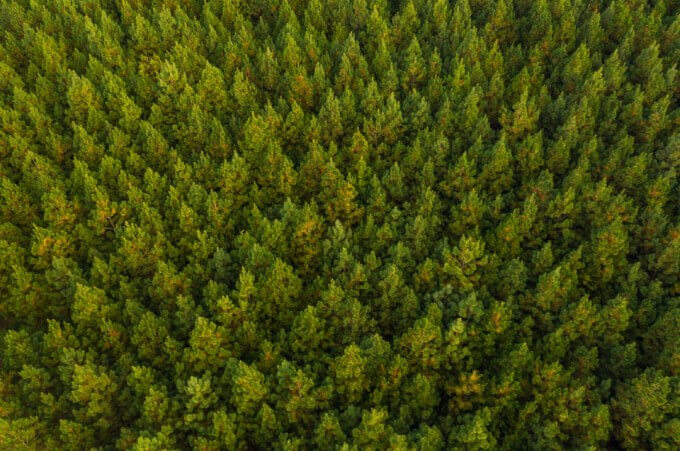
A key part of sustainable forestry
Reforestation is a necessary and powerful tool for organizations committed to forest conservation and a sustainable future. These collective efforts not only restore forests but ensure healthy environments and ecosystems needed to sustain all species. As the wood from trees can be a renewable resource, reforestation and sustainable forestry are important in ensuring that trees are renewed and remain a forever resource.




